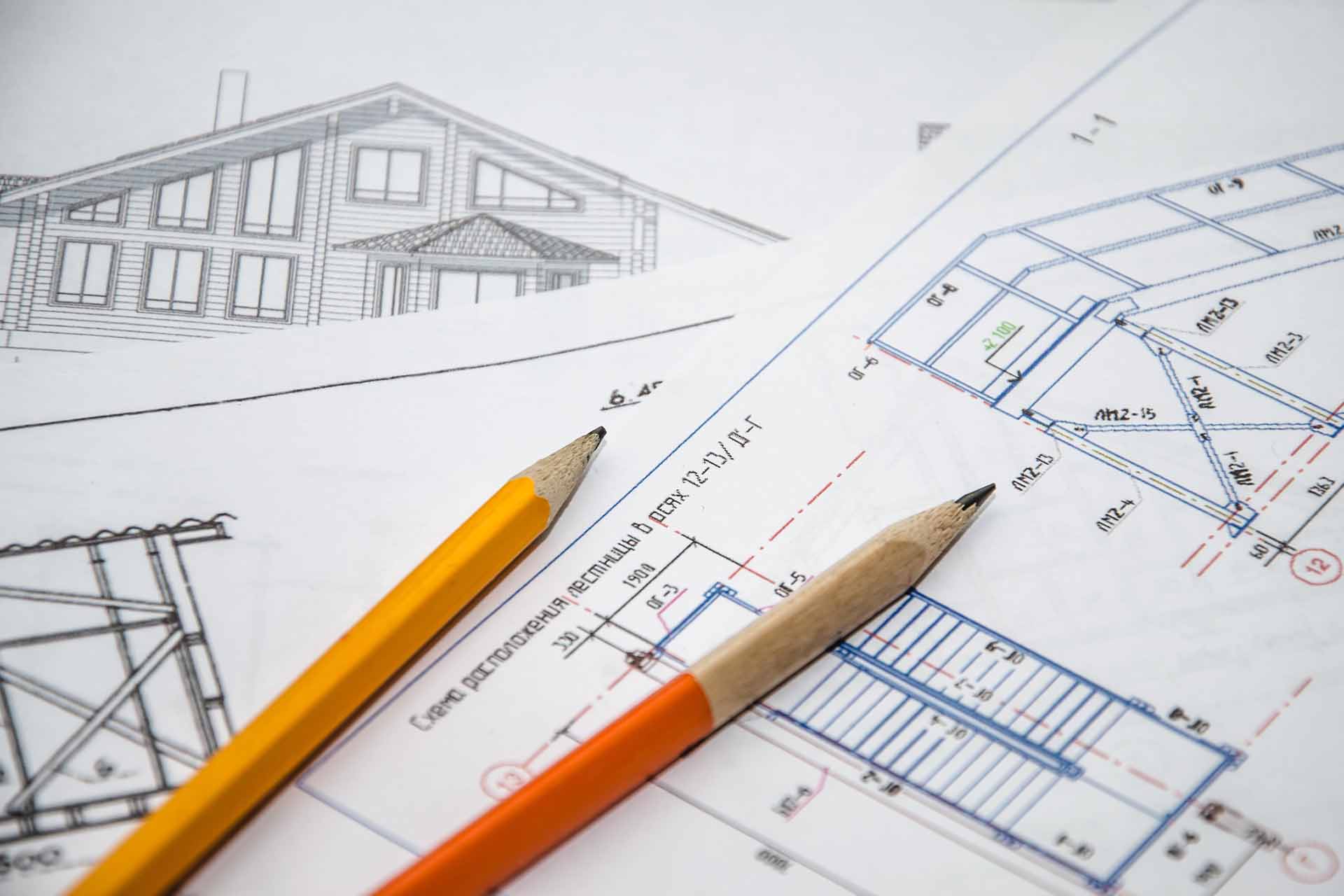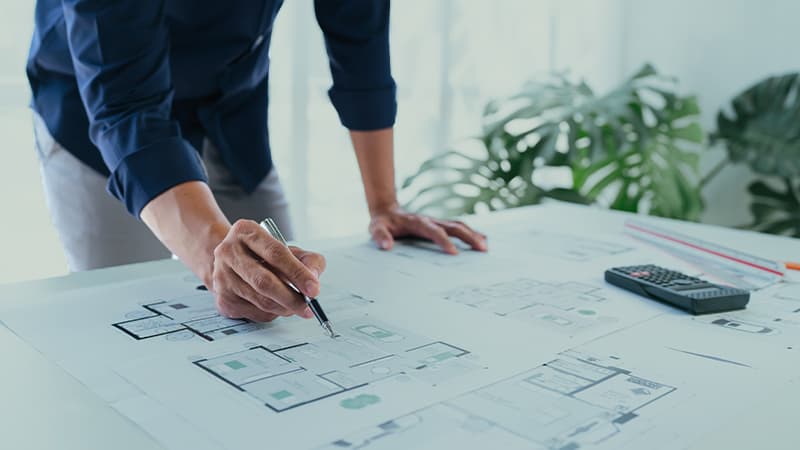Comprehending the Diverse Career Paths Available for Aspiring Architect
As an ambitious Architect, you have a world of occupation paths awaiting you. Each course offers distinct challenges and opportunities to use your creative thinking and technological expertise. Whether you're drawn to traditional design or the nuances of lasting layout, there's a specific niche that lines up with your passions. Recognizing these diverse alternatives can shape your specialist journey, however which instructions will you choose to explore initially?
Standard Style: Creating Structures and Structures
Conventional design concentrates on developing structures and frameworks that blend functionality with aesthetic appeal. Your designs can show social heritage, showcasing local customs while satisfying modern needs.
You'll establish abilities in composing, model-making, and website evaluation, enabling you to imagine and connect your concepts properly. Involving with clients, you'll require to comprehend their vision and convert it into viable styles.
Moreover, constructing codes and sustainability techniques are crucial in your job, ensuring your structures are eco friendly and secure. As you expand in your job, you'll discover chances in residential, commercial, and even repair tasks, each offering unique challenges. Welcoming traditional design paves the way for a satisfying profession that admires the past while shaping the future.
Urban Preparation: Shaping Neighborhoods and Public Spaces
As an aspiring Architect, you can play a necessary duty as a metropolitan organizer, transforming exactly how neighborhoods interact and operate. By employing neighborhood involvement methods, you'll ensure that citizens have a voice in forming their atmosphere. Plus, integrating sustainable layout concepts will assist produce spaces that not only meet today's demands however likewise safeguard the future.
Function of Urban Planners
While several might assume of engineers as the sole visionaries behind buildings, city planners play a crucial duty in shaping the wider landscape of neighborhoods and public spaces. By teaming up with different stakeholders, you'll help create parks, transport systems, and domestic locations that advertise social communication and availability. Your knowledge in spatial design and area dynamics permits you to visualize future growth while maintaining cultural heritage.
Neighborhood Involvement Approaches
Efficient area engagement techniques are vital for metropolitan coordinators to ensure that the voices of homeowners are listened to and valued in the planning procedure. To cultivate purposeful discussion, you should prioritize open discussion forums and workshops where community members can express their concepts and problems. Usage surveys and social media sites to get to a broader audience, making certain varied perspectives are consisted of. Collaborating with local organizations can boost count on and help with deeper connections. It is essential to provide clear information regarding proposed jobs and decision-making processes, allowing citizens to really feel enlightened and encouraged. By actively incorporating and paying attention feedback, you'll produce spaces that mirror the community's requirements, ultimately leading to more effective and lasting urban atmospheres. Accept transparency and continual dialogue for lasting influence.
Lasting Style Principles
When designing metropolitan rooms, including sustainable layout concepts is vital for producing atmospheres that thrive both environmentally and socially. You must begin by concentrating on energy efficiency, utilizing materials that minimize waste and promote recycling. Think about incorporating environment-friendly spaces, like parks and gardens, to improve biodiversity and boost air high quality. Promoting walkability and public transport can minimize dependence on cars and trucks, cultivating a healthier neighborhood.
Creating with water conservation in mind is additionally vital-- think of rainfall gardens and permeable surfaces to manage stormwater. Involving neighborhood members during the planning procedure warranties that the areas you develop fulfill their demands and encourage social interaction. By accepting these concepts, you'll add to dynamic, sustainable city landscapes that profit every person.

Landscape Style: Producing Sustainable Outside Environments
As you discover landscape design, you'll uncover essential design concepts that develop functional and gorgeous outdoor rooms. Lasting practices play an essential role in making sure these settings grow while minimizing environmental impact. And also, you'll locate a range of career opportunities that permit you to make a genuine distinction in just how people connect with nature.
Design Principles in Landscape
Comprehending design concepts in landscape design is essential for producing lasting outside atmospheres that balance with nature. You'll need to consider aspects like percentage, scale, and equilibrium to guarantee your layouts really feel natural and inviting. Including native plants not only improves biodiversity but additionally reduces water use, making your landscape resilient. Think of the circulation of space and how individuals engage with it; pathways and seating areas must invite exploration and relaxation. Additionally, take notice of seasonal modifications, designing with products that complement the environments year-round (Architect). By prioritizing sustainability and appearances, you can produce outdoor spaces that enhance the community and promote well-being. Welcoming these concepts will establish a strong foundation for your career in landscape architecture.
Sustainable Practices Review
Lasting practices in landscape architecture not only concentrate on looks yet additionally prioritize environmental health and source preservation. By integrating indigenous plants, you boost biodiversity and minimize the demand for chemical plant foods and pesticides. Applying efficient irrigation systems helps conserve water and reduces overflow, safeguarding nearby communities. You can create rooms that promote soil health, such as exercising and utilizing organic products permaculture principles. Additionally, integrating environment-friendly facilities, like rainfall gardens and permeable sidewalks, help in stormwater monitoring and minimizes metropolitan warm. You contribute to a healthier world and give spaces that foster community connection when you develop exterior environments with sustainability in mind. Inevitably, these methods ensure your layouts profit both individuals and the setting for many years ahead.
Profession Opportunities Exploration
With a strong foundation in lasting techniques, landscape style uses a selection of career courses that allow you to make a meaningful influence on the setting. Urban planners typically team up with landscape architects to develop eco-friendly spaces in urban settings, improving city livability. If you're enthusiastic about education, Bonuses take into consideration ending up being a landscape design instructor, inspiring future generations.
Lasting Style: Concentrating On Eco-Friendly Practices
As you discover your occupation in style, embracing eco-friendly methods can set you apart in a competitive field. Lasting layout focuses on producing buildings that minimize environmental influence while boosting resident well-being. By including eco-friendly products, energy-efficient systems, and lasting structure techniques, you'll add to a greener future.
Start by acquiring understanding of eco-friendly accreditations like LEED or BREEAM, which can strengthen your credentials. Think about how natural light, ventilation, and thermal performance can maximize design. Collaborate with engineers and environmental experts to introduce services that reduce waste and save sources.
Do not neglect the relevance of neighborhood involvement-- engaging regional stakeholders can influence styles that integrate with the environment. As customers progressively focus on sustainability, your proficiency in environment-friendly practices will certainly not only attract jobs but additionally accomplish your passion for liable style. Welcome this crucial facet of the career, and view your career grow.
Historical Preservation: Protecting and Bring Back Cultural Heritage
While you commence on your building journey, take into consideration the essential duty of historical preservation in keeping our social heritage. This field concentrates on the defense and restoration of substantial buildings, sites, and structures that tell the stories of our past. By taking part in historic preservation, you'll help view it now safeguard the architectural tradition that shapes community identity.
As a historic preservation Architect, you'll evaluate historic relevance and analyze the problem of structures. You'll function very closely with historians and guardians to assure authentic restoration strategies are used. This occupation path allows you to blend imagination with research study, allowing you to design options that respect original products and workmanship.
Your job not just adds to sustainability by recycling existing structures but additionally cultivates a sense of satisfaction within communities. Accepting this course will certainly aid you end up being a guardian of background, protecting the tales and aesthetic appeals that enhance our lives.
Inside Architecture: Enhancing Indoor Spaces
Historic conservation and interior style both share a commitment to boosting the constructed setting, however they concentrate on various aspects. While historic preservation emphasizes maintaining a framework's social and historic value, indoor style absolutely nos in on optimizing indoor rooms for performance and appearances.
As a hopeful Architect, you'll find that indoor design allows you to mix creativity with technological abilities. You'll design spaces that not only look good however additionally promote convenience and efficiency. This area includes comprehending just how light, color, and materials engage within an area, influencing mood and usability.
You'll deal with various projects, from domestic homes to commercial offices, making sure that each setting satisfies the needs of its occupants. By prioritizing individual experience, you can change interiors right into motivating and useful rooms, making a significant influence on exactly how people connect with their surroundings. Accept the possibility to improve indoor environments and shape the way individuals live and function.
Industrial Style: Merging Functionality With Appearances
Commercial layout plays an important role in developing products that effortlessly mix looks with functionality, ensuring that what you utilize day-to-day is not just aesthetically enticing however likewise practical. As an aspiring Architect, you can involve on your own in this field, focusing on developing every little thing from furniture to customer electronics. Your work includes understanding individual needs, products, and manufacturing processes, enabling you to produce cutting-edge solutions that boost everyday experiences.
In commercial design, you'll frequently collaborate with makers, marketing experts, and designers, ensuring that your styles are not just beautiful but likewise viable. This career course provides a dynamic setting where helpful site creativity fulfills functionality, making it a rewarding choice for engineers interested in shaping the items of tomorrow.
Often Asked Questions
What Educational Qualifications Do I Required to Come To Be an Engineer?
To end up being a designer, you'll require a specialist level in style, usually a Bachelor's or Master's. In addition, you'll have to complete a teaching fellowship and pass the Architect Registration Evaluation to practice lawfully.
Exist Accreditation Requirements for Various Architectural Job Paths?
Yes, there're qualification demands for various building courses. Architect. You'll need to pass examinations, full teaching fellowships, and often pursue specialized training, depending on your selected focus, like landscape design, urban layout, or historic preservation
What Software Program Abilities Are Important for Designers Today?

How Can I Gain Practical Experience While Examining Design?
You can acquire useful experience by interning at building firms, taking part in design competitors, volunteering for area jobs, or teaming up with classmates on real-world assignments. These opportunities improve your skills and build beneficial links in the industry.
What Work Opportunities Exist Outside Conventional Architecture Firms?
You can discover various work possibilities outside conventional style firms, like urban preparation, interior layout, landscape design, building administration, property advancement, and even roles in sustainability consulting. Each offers distinct obstacles and rewards.
Whether you're attracted to conventional architecture or the subtleties of lasting layout, there's a niche that straightens with your passions.When making urban rooms, including sustainable style concepts is important for producing settings that thrive both ecologically and socially.As you check out landscape architecture, you'll discover essential style principles that produce lovely and practical outdoor spaces.Understanding layout principles in landscape style is necessary for producing lasting outside environments that harmonize with nature.In commercial layout, you'll frequently team up with marketing experts, producers, and engineers, ensuring that your styles are not only gorgeous but likewise viable.